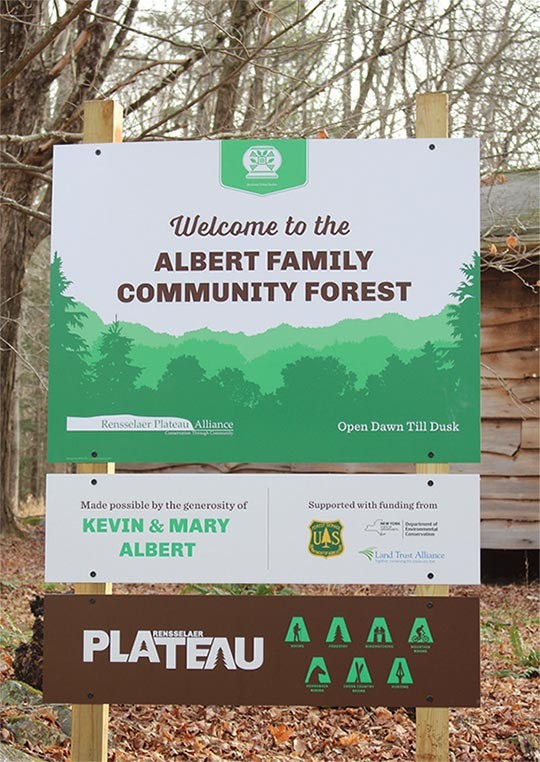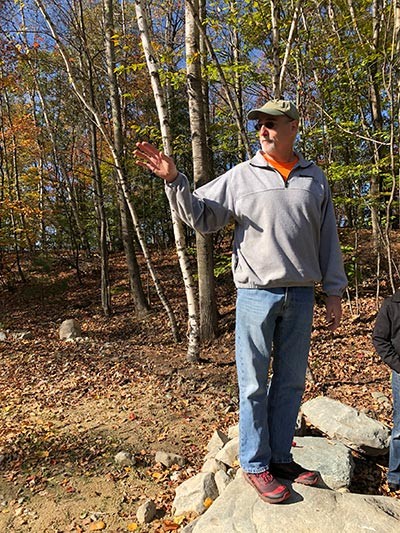Jim Bonesteel of Averill Park, New York, has been writing software that’s used to run robots all over the world for more than 30 years. And yet his interests outside of work are anything but artificial.
“I happen to be a code writer. That’s my career,” he said. “Though the thing I’m really passionate about is my conservation work. The robotics work helps to pay the bills.”
Bonesteel started out in conservation as a volunteer at the Dyken Pond Environmental Conservation Center, about a 40-minute drive from home.
“I got involved in conservation because I was spending a fair amount of time at the conservation center in the early 1990s, and I was invited to become a board member,” he said. “As a kid I was always out playing in the woods and in the streams. I loved wildlife, hiking, and backpacking. I just… never had time to act on those values until I joined the board that would help conserve the forest and natural places.”
In the early 1990s, Bonesteel was asked to become chair of that board, which was focused at the time on a land acquisition project that would add 80 acres to the conservation center. This got him involved in fundraising, and led to additional conservation projects. “We wound up doing an entire series of conservation projects that were successful and well received over the years,” Bonesteel said.
Around 2006 he became part of a group of citizens and organizations that came together to conserve forestland on the Rensselaer Plateau. Bonesteel served as the volunteer board president of the Rensselaer Plateau Alliance until 2014, when he was hired as the group’s part-time Executive Director.
One of the organization’s early projects was to create a regional conservation plan.
“Part of what we did with that was to get all of the municipal officials, citizens, members of the forest products industry, and recreational groups together. We invited them to participate in the development of this regional conservation plan,” he explained. “That project formed the foundation of a lot of our work since, and it also built our relationships with all of these constituents.”
The group completed detailed ecological and economic studies as part of the conservation plan. The work led to the creation of community forests in the area.
“In 2011, one of our board members, Walter Kersch, and I went to a workshop at the Harvard Forest in Petersham, Massachusetts,” Bonesteel said.
“At that workshop there were breakout sessions, and Walter attended one on community forests. On our two-hour drive home…that was all he could talk about. He was so excited about community forests. Then he presented the idea to our board as the champion of it.”
The following year, the Rensselaer Plateau Alliance received a grant to conduct a full-day community forest workshop of its own. “We invited people from land trusts, municipal officials, and anyone who might be interested in community forests. We invited experts in from the Northeast to teach us,” said Bonesteel. “We wanted to share this information with other organizations, and we wanted to learn for ourselves how to do community forests. It was a big success.”
The organization searched for a parcel of land that could become a community forest.
“After looking at a dozen different possibilities, we found one that was 350 acres, owned by a local mining company,” he said. “It was the perfect site. It had forests in a state where some forestry could be done. The forests were healthy and could be used as a demonstration forest with active forestry. The land had other really interesting features, including three different kinds of wetlands. A small portion was an abandoned gravel mine that was being reclaimed by forest. We got a contract and wrote a grant application to the US Forest Service’s Community Forest Program.” This grant program will pay for up to half of the appraised value of the land, which in this case was $300,000.
In addition to the grant, the plan was approved for a loan from The Conservation Fund. “We asked the seller to donate some money, and they agreed to donate $100,000 from the sale price. We closed on the acquisition of the property in 2014. We were able to raise the remaining funds and pay our loan off two years later,” said Bonesteel. “The community forest is on the 118,000-acre Rensselaer Plateau. We did a second community forest project that we closed on in January of 2017. It is 353 acres.”
The committee is still active today, he added. “A volunteer trail crew has built about 6 miles of trails. The Saratoga Mountain Bike Association has built a network of trails geared toward mountain bikes. It’s being used for recreation extensively.”
The group has hired a forester, who’s done a forest management plan. They recently entered into a contract for their first timber harvest, which is scheduled to be completed this upcoming winter (2018-2019). Going forward, the plan is to use the site as a demonstration forest for sustainable forestry practices.




